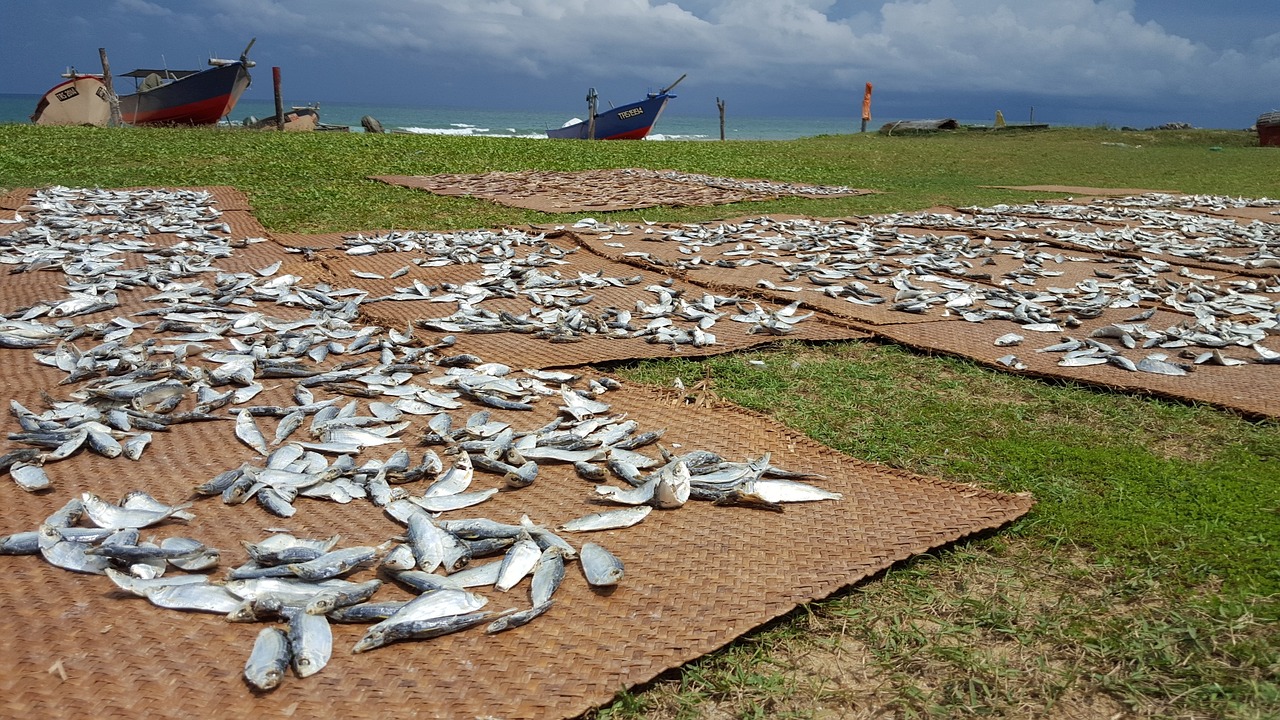Dried fish consumption tendency in the coastal area of Bangladesh

Dried Fish Consumption and Production in Bangladesh
Do you like dry fish to eat? Some people don’t like any dry fish to eat or even to buy. They don’t like to feel any smell coming from the dried fish. That smell or odor is so disgusting for them that they just keep themself outside of the dried fish production area and avoiding to consume.
Bangladesh is very most popular in the world for producing dried fish. Dried fish is one of the Natural resources in Bangladesh from the Bay of Bengal. The main location for dried fish is Cox`s Bazar and Chittagong. People are exporting dried fish to the world. The tendency to eat dried fish is very important to know because we see some people who don’t like dried fish, like me.
So, is there any study related to this result? How many people like dried fish? Who are the people interested more eating dried fish? Did you think? What type of dried fish is eating the maximum quantity? Here is a study. This study is conducted by Dr. Sazedul Hoque, Faculty of Fisheries, Patuakhali Science, and Technology University.
His study shows the tendency of consumption of dried fish, especially in the coastal region of Bangladesh. Fish and fishery are products, is a traditional common daily diet of the people of Bangladesh. It gives nutrition. It is less expensive to produce. In Bangladesh, dried fish consumption varied on sites, species, and consumer choice.
Study shows that the consumption tendency of common five dried fish is Bombay duck, Ribbon Fish, Silver Jewfish, Shrimp, and Chinese pomfret found maximum in five distinct Cox`s Bazar, Chittagong, Bhola, Patuakhali, and Khulna.
The study showed that the tendency of consumption of dried fish is maximum in Cox`s Bazar, then Chittagong and other distinct. Of the five dry fish Bombay duck is the highest consumption amount. It is around 82% of people like this followed by Ribbon Fish of 81%.
The people in the Khulna region like mostly dried Shrimp. Among the non-consumers of dried fish is the maximum in Khulna district. In this study, the result shows the maximum consumer for dried fish is located in Cox’s Bazar Bombay duck maximum then Ribbon Fish.
What is Dried fish?
Dried fish is a food preservation technique used for centuries across different cultures around the world. It involves removing most of the moisture from fish, typically through sunlight, air drying, smoking, or a combination of methods. This significantly reduces the growth of bacteria and slows down spoilage, allowing the fish to be stored and consumed for a much longer period than fresh fish.
Here are some key characteristics of dried fish:
Taste and Texture:
- Dried fish often has a concentrated flavor, richer and more intense than its fresh counterpart.
- Depending on the drying method, it can have a chewy, firm, or even crispy texture.
- In some cases, additional flavors are added through salting, marinating, or smoking.
Nutritional Value:
- Dried fish retains a good amount of protein and essential nutrients like Omega-3 fatty acids, calcium, and iodine.
- However, the drying process can concentrate sodium and histamine levels, so moderation is important.
Uses and Recipes:
- Dried fish can be eaten as a snack on its own, rehydrated for use in dishes like curries, stews, soups, and salads, or ground into a powder for flavoring.
- Different cultures have unique recipes and ways of incorporating dried fish into their cuisine.
Popular Varieties:
- Stockfish (Norway)
- Baccalà (Italy)
- Maldive fish (Maldives)
- Dilis (Philippines)
- Shuto (Japan)
- Ikan bilis (Southeast Asia)
Health Considerations:
- As mentioned, dried fish can be high in sodium and histamine. People with certain health conditions like high blood pressure or histamine intolerance should consult their doctor before consuming it.
What are dried fish’s health benefits?
Dried fish packs a surprising punch when it comes to health benefits, thanks to its concentrated nutrients and unique processing methods. Let’s dive into the fishy goodness:
Protein Powerhouse: Dried fish boasts an impressive protein content, often higher than its fresh counterpart due to water removal. This protein provides essential amino acids for building and repairing tissues, keeping you feeling full and satiated.
Omega-3 Bonanza: Fatty fish varieties like salmon, tuna, and mackerel are particularly rich in Omega-3 fatty acids, renowned for their heart-healthy properties. These beneficial fats can help lower bad cholesterol, reduce inflammation, and even protect against cognitive decline.
Vitamin and Mineral Mix: Dried fish is a good source of various vitamins and minerals, including vitamin D, calcium, iodine, and iron. Vitamin D strengthens bones and boosts immunity, calcium keeps bones strong, iodine supports thyroid function, and iron plays a crucial role in oxygen transport.
Other Potential Benefits:
- Improved gut health: Some studies suggest fermented dried fish (popular in Southeast Asia) might benefit gut microbiota due to the presence of probiotic bacteria.
- Bone health: The concentrated calcium and vitamin D in dried fish can contribute to stronger bones and potentially reduce the risk of osteoporosis.
- Mental health: Omega-3 fatty acids in dried fish may play a role in improving mood, reducing anxiety, and protecting against depression.
Mindful Consumption:
While dried fish offers substantial health benefits, it’s important to be mindful of potential downsides:
- High sodium: Many dried fish varieties are higher in sodium due to salting or marinating. Be mindful of intake, especially if you have concerns about blood pressure.
- Histamine levels: Certain fish are naturally high in histamine, which can be concentrated further during drying. People with histamine intolerance should opt for low-histamine varieties or consume them in moderation.
- Mercury concern: Some larger fish species can accumulate mercury. Choose smaller varieties or those known for lower mercury levels.
Where to find dry fish cox’s Bazar?
This coastal region in Bangladesh boasts a thriving dry fish industry thanks to its abundant marine life and perfect drying conditions. From tiny chhuri (anchovies) to mighty rupsha (hilsa), a staggering variety of fish await transformation into flavorful treasures.
Popular Varieties:
- Chhuri: These tiny fish are packed with flavor and often consumed whole as snacks or used in curries.
- Loitta: Larger than chhuri, loitta offers a meaty texture and is popular in stews and stir-fries.
- Poa: Similar to loitta but with a stronger flavor, poa is a versatile ingredient for various dishes.
- Rupchanda: The queen of dry fish, rupchanda is renowned for its delicate flavor and high price tag.
Where to Find Dry Fish:
- Naziratek Shutki Mahal: This sprawling marketplace near Cox’s Bazar airport is a paradise for dry fish enthusiasts. Over 50 wholesale shops offer a vast selection at competitive prices.
- Old Burmese Market: Located in the heart of Cox’s Bazar town, this traditional market has shops selling not only dry fish but also handicrafts and souvenirs.
- Laboni Beach: Several shops along this vibrant beach cater to tourists, offering various dried fish options and even preparing them for immediate consumption.
Beyond the Market:
- Local Restaurants: Many restaurants in Cox’s Bazar incorporate dry fish into their dishes, allowing you to experience its culinary potential firsthand.
- Cooking Classes: Immerse yourself in the local culture by taking a cooking class. You’ll learn how to prepare traditional dishes featuring dry fish as the star ingredient.
Tips for Buying and Consuming:
- Look for freshness: Choose dry fish with a dry, firm texture and no unpleasant odor.
- Ask for recommendations: Local vendors are experts and can guide you towards the best varieties for your taste and budget.
- Consider processing: If you’re not accustomed to dry fish, ask the vendor to clean and slice it for you.
- Hydrate before cooking: Soaking dry fish in water or milk for a few hours before cooking can improve its texture and flavor.
Enjoy responsibly:
- Be mindful of potential sodium and histamine levels in certain varieties.
- Moderation is key, as with any food.
Dried fish from Cox’s Bazar is a captivating cultural experience for your taste buds. So, delve into this unique world, explore its flavors, and discover the true essence of Bangladeshi coastal cuisine!
More You may like
Hardrock In Bangladesh

